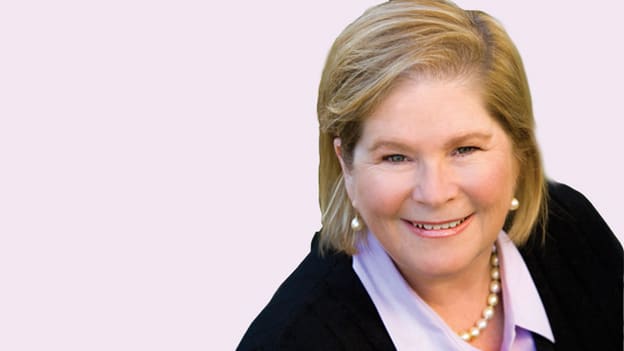Visa’s CLO on the digital renewal of learning infrastructure

Karie is the SVP and Chief Learning Officer for Visa globally. She was formerly head of SAP’s Global Education business unit and was the Workplace Futurist at SuccessFactors, an SAP human capital software company. Karie was also the cofounder and CEO of Jambok, the industry’s first video-based informal social learning software platform, which was acquired by SuccessFactors in 2011.
An industry veteran with over three decades worth experience, Karie served as the Chief Learning Officer for Sun Microsystems, Chief Talent Officer for Solectron (now Flextronics), led the people development function at Lockheed Martin Tactical Aircraft Systems and ran executive development at H.J. Heinz. She serves on the global leadership council for the business school at Colorado State University. Additionally, also on the board of City Year, San Jose, she supports young leaders who are making remarkable changes in high school dropout rates.
Karie is the coauthor of the award-winning bestseller, The 2020 Workplace: How Innovative Companies Attract, Develop & Keep Tomorrow’s Employees Today and a regular blogger for Harvard Business Review as well as other publications. She also authored Stretch: How to
Future Proof Yourself for Tomorrow’s Workplace, which went on to be selected as Amazon Editor’s Pick in Business and Leadership in 2016.
In conversation with People Matters, Karie talks about Visa’s key learning priorities to bounce back from the ongoing crisis, the need to accelerate learning instead of revamping strategy, and advises how HR and business leaders can together build a high-impact learning culture.
What has been your biggest observation about employees throughout the first half of this year?
The last six months have shown how resilient we are as human beings. Who could imagine that so much of the world of business could be done from our homes? Whether we have young children popping into our video conference view or dogs barking in the background, we have learned not only how to be personally resilient, but how to also support our colleagues in ways we never imagined, with compassion, tolerance, and understanding.
What are the key learning priorities for your organization as you prepare to bounce back from the ongoing crisis?
Like most organizations, we’re keen to see economic recovery, so our key learning priorities are around preparing our client-facing employees with the skills to help our clients around the world leverage that economic rebound. I don’t believe the world will ever be the same and that will require us to be increasingly flexible, so a second key priority is skilling our leaders with the mindset to build an inclusive and agile culture in order to be responsive to ever changing conditions.
Have you revamped your L&D strategy? Or are you looking to?
Rather than revamping our strategy, we accelerated key aspects of it. For example, we were on a digital renewal of our learning infrastructure, with more emphasis on scalable and virtual learning solutions. As you know, the live classroom has retained a strong position in most corporate learning functions, and the pandemic has given us an opportunity to advance and scale learning. We have delivered 40% more training year over year, in spite of having no physical classrooms for more than seven months.
The World Economic Forum predicts that by 2022, no less than 54% of all employees will require significant re-skilling and upskilling. How can organizations fill the skill gaps when their priority is business continuity and employee well-being?
Of course the best way to avoid significant reskilling is to continuously upskill. Imagine your first cellular phone compared to the one you have now. My first one was bulky and looked pretty similar to my landline phone. With each subsequent new phone, we added more technology. If I’d gone from that first one to my iPhone today, I’d have to go to class for it! But I learned a little every time. We have to build this into how people work and build in conscious learning while at work. The classroom should be for sudden advances or complex skills, not gradual and incremental. We now have tools to insert training into the platforms we work on, eliminating the need for training on small changes because the learning is there at our fingertips.
What has been the biggest challenge in attaining learning inclusivity for organizations?
The biggest barrier in my view has been our lack of recognizing when and how we achieve inclusivity. It just doesn’t happen magically on its own, because our unconscious biases insidiously prevent the level of inclusivity we want to attain. We have to make it a visible goal, with measures.
What is your advice for CHROs and people managers who face challenges to skill and re-skill their employees, including cost and other bottlenecks?
My belief is this is the perfect moment to reinforce that we expect our managers to be responsible for building a sustainable work force – not HR or Learning. If you think back to when you learned the most in your career, it was probably when you had a chance to do a project or a job that was a bit over your head. You stretched to figure out how to do it. You talked to people, you read up on the subject, and maybe you took a class. We can still do that. So much content is available free and online, and we can put people in new roles and coach them to success. No formal training or budget required. That’s what we have to do when we’re in a pinch.
There is a significant cultural shift organizations are facing after the crisis. How can business leaders and HR teams work together to create a high-impact learning culture in their organizations?
We should be boldly facilitating the conversations about these significant shifts. None of us knows where this is going, so we need to be talking to each other. What an exciting time for HR and Learning teams to be at the heart of a transformation, if only we’ll seize the opportunity.














